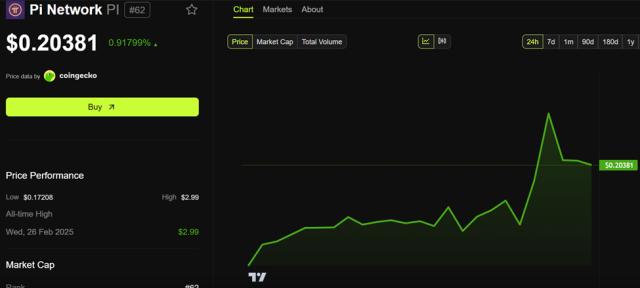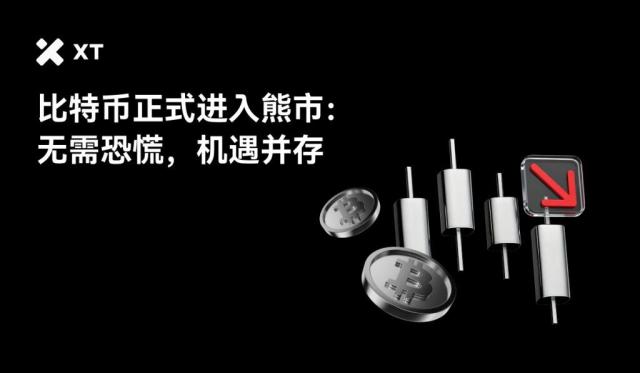For a long time, the ecology on the Bitcoin chain has been an impossible thing in everyone's eyes. This is based on the nature of Bitcoin itself. Except for transfer transactions, almost no other content can be saved on the block.
However, in the 14 years since the birth of Bitcoin, the stories about Bitcoin have never stopped. Recently, a Bitcoin Core contributor named Casey Rodarmor wrote a new story for Bitcoin.
At the end of December 2022, Rodarmor brought the concept of Bitcoin Ordinals and Inscriptions (ordinal numbers and inscriptions) to everyone's field of vision, introducing NFT to the most fundamentalist Bitcoin network. On January 21, 2023, the Ordinals protocol released version 0.4.0, and the amount of BTC NFT minted began to soar.
BTC NFT
Let’s briefly understand BTC NFT first.
Because the Bitcoin network does not support smart contracts, NFTs cannot be issued through contracts. Rodarmor's solution is to engrave NFT on BTC.
Since the total amount of Bitcoin is limited, 21 million pieces, and its price is very high, Bitcoin has a minimum unit of Satoshi (English sat), and 1 Bitcoin can be divided into 100 million Satoshi. Rodarmor's idea is:
Can we arrange these satoshis in a certain order, assign them an ordinal number between 0 and 2,100,000,000,000,000, and then connect them to other information: pictures, text, video or even a string of codes. Thus each Satoshi becomes unique and irreplaceable. This is equivalent to giving Bitcoin the native ability to create NFTs.
Rodarmor wants to create a system to number Satoshi, assign a unique serial number (Ordinals) to each Satoshi, and get integers from 1 to 100 million, and each ordinal number represents a Satoshi Bitcoin, which is impossible subdivided. This unique identifier will allow users to track each satoshi on the blockchain. He hopes to be able to do this in a thoroughly bitcoin-native way, without the use of sidechains or separate tokens.
Apparently, Rodarmor succeeded. The latest data from Dune Analytics shows that the cumulative minting volume of the Bitcoin NFT protocol Ordinals has reached 1,795,678, and the total cost has reached 185 BTC.

BRC-20
A stone hits a thousand waves.
While BTC NFT (Ordinals) attracted attention, it also made a developer named @domodata on Twitter think, since NFT can be minted through the Ordinals protocol, can BTC-based tokens be minted through the Ordinals protocol?
On March 8, 2023, the experimental, fungible $ordi token was born, along with its protocol BRC-20.
@domodata leverages the Ordinals inscription of JSON data to deploy token contracts, mint and transfer money. He tweeted:
Based on the Ordinals protocol, I started an experiment on the issuance of homogeneous tokens on BTC, called brc-20.
At the same time, the first BRC-20 token called $ordi was issued, with a total of 21 million (a tribute to BTC), and everyone can receive it for free.
BRC, the abbreviation of Bitcoin Request for Comment in English, means Bitcoin Request for Comment Agreement in Chinese. BRC-20 is obviously against ERC-20 of Ethereum. ERC-20 is a standard token issuance protocol based on Ethereum network. With ERC-20, developers can create tokens efficiently, reliably and at low cost. A token dedicated to its own project, BRC-20 must also have this vision.
BRC-20 Core: Deploy tokens, Mint (mint) tokens and transfer tokens.

(1) Deploy tokens
Just write a txt text in the following format to mint new tokens. The places that need to be modified are:
"ordi" → new token name
"21000000" → number of new tokens
"1000" → maximum minting amount of new tokens

(2) Minting tokens
How to mint new tokens? Modify according to the format below, and then cast it. The places that need to be modified are:
"ordi" → new token name
"1000" → want to mint amount (cannot exceed the maximum mint amount of the token)

(3) Transfer tokens:
Modify according to the following format, the places that need to be modified are:
"ordi" → new token name
"amt" → the amount you want to transfer (cannot exceed holding amount)

BRC-20 Usage
Nearly two months have passed, how is the development of BRC-20? According to brc-20.io, there are more than 5,000 types of tokens deployed on BRC-20, with a total market value of 42.68 million US dollars. $ordi ranks first, with a market capitalization of $23.1 million, accounting for half of the total market capitalization, four times that of the second place, $meme.

Details are as follows:
(1) $ordi Bitcoin's first native token, with a total of 21,000 pieces and a market value of 23.1 million. As the first BRC-20 born, it has symbolic significance, just like Punk in NFT. The creator @domodata also said that $ordi is just an experimental token and has no practical significance, but this does not affect everyone's hype.
(2) $meme Bitcoin's second native token, with a total of 99,999 pieces and a market value of 5.5 million.
(3) The third native token of $punk Bitcoin, with a total of 10,000 pieces and a market value of 1.09 million.
(4) $pepe is the fourth native token of Bitcoin, with a total of 42,069,000 pieces and a market value of 4.62 million.
Highlights of BRC-20
(1) New story
Under the current market environment, it is difficult to find any projects that can attract people's attention. The Bitcoin ecosystem has opened a new door. At present, there are few ecological projects, and there is huge room for growth.
(2) Decentralization
With the merger and upgrade of Ethereum, there is one less public chain that chooses the PoW route, and there are very few left. However, PoW is more decentralized than PoS. Choosing the Bitcoin blockchain for token issuance is a kind of persistence and expansion of the spirit of decentralization.
(3) Technical stability
There is no essential difference between the current Bitcoin code and the original one written by Satoshi Nakamoto. The major updates in recent years are only Setwit and Taproot (Bitcoin’s expansion and upgrade plan, laying the foundation for the emergence of Ordinals). The code that has been running without any technical problems for more than ten years is enough to prove its robustness, which is a technical guarantee for on-chain projects.
(4) Value anchoring
Bitcoin is the largest and most real value of the entire encryption industry, accounting for about 40% of the total market value, and is the banner of the entire encryption industry. Most of Bitcoin's ecological projects are denominated in Bitcoin. When the price of Bitcoin fluctuates, these projects will also be affected.
Progress on BRC-20
From a matter-of-fact point of view, BRC-20 currently has no real value, just like writing a number on a piece of paper and saying it is a check. Therefore, solving the problems of BRC-20 has become the research direction of many technicians.
Progress 1: Solving Liquidity
$ordi has been fully minted, so how do other people hold it? Direct transfers are costly and risky, and a marketplace to support transactions emerges.
Some wallets related to Bitcoin, such as UniSat, can be traded, which solves the liquidity problem of BRC-20 tokens.

At the same time, some centralized exchanges, such as OKX, are also deploying BRC-20. Previously, OKX Web3 became the first multi-chain wallet to support the Ordinals protocol BTC NFT.

Regarding viewing the data on the BRC-20 chain, @domodata gave a Dune link, but it is still being improved due to serious delays in data updates.

Progress 2: Solving Value Anchoring
To solve the problem of value, it is necessary to make BRC-20 practical, such as linking with projects.
OrdzGames, a native GameFi project like Ordinals, will issue rewards in BRC-20. This makes its BRC-20 rewards more valuable and meaningful.

Progress 3: BRC-20 Improvement
Some people have questioned the BRC-20 agreement: any meaningful fungible token agreement should not use the JSON format.
As the underlying protocol, any byte can be inscribed. Although JSON improves readability, it also increases the size of the inscription. When third-party services read data, there is no need to consider the readability of the protocol. We need a more lightweight agreement.
So a guy named Hugo Clrd @Cohars improved the BRC-20 and created the BOP protocol.

Judging from the current BOP standard, the name, ID, maximum supply, minting and transfer methods are available, and the account balance and transfer tokens also need an on-chain indexer and a front-end to display, and Ethereum ERC-20 Compared with BRC-20, it is more programmable, scalable and composable, and lighter in weight. Whether BOP can be promoted needs to be verified by the market.
Impact of BRC-20
Ordinals got many people excited about the scaling possibilities of the Bitcoin network. While the project is in a very early, experimental stage, its implications are worth exploring.
In the blockchain world, the author believes that there are 3 subversive projects.
The first Bitcoin, opened the door to the decentralized world. Its status and influence in the industry has never been weakened. Due to its decentralization, there is no smart contract, and the ecological development is limited, which makes Ethereum develop.
The second Ethereum, which solves the ecological problems on the chain, has developed thousands of applications based on Ethereum smart contracts. However, as the number of users increases, the disadvantages begin to appear. Even after several upgrades, the current transaction speed and gas fee are still a headache. We can only look forward to continuous optimization in the future.
The third ICP (Internet Computer), this is a very advanced project, the goal is to make the user experience on the blockchain the same as surfing the Internet, which is fast and does not require various chain verification and handling fees. But its disadvantages are also because it is too advanced, there are not many people who have experienced it, and there are not many ecological projects.
In this "thousands of projects, consensus determines success or failure" circle, no one can predict which project will come to the end. Returning to the original intention, it is still Bitcoin, which determines that the status of Bitcoin cannot be shaken.
If BRC-20 helps Bitcoin achieve ecological expansion, then a large consensus will return to Bitcoin itself, which will affect other projects.
But one thing to note here is that the nature of BRC-20 and ERC-20 is different. ERC-20 is an improvement of Ethereum and is deployed on the Ethereum chain, while BRC-20 is a "third-party auxiliary tool".
BRC-20 does not have a smart contract and uses inscriptions as ledgers, but it is difficult to produce an efficient and stable system with immutable ledgers. And it takes up very precious resources on the Bitcoin chain, including paying a certain amount of Satoshi as a miner's fee and the time spent waiting for transaction confirmation. Because it is very unstable, it is easy to cause problems in transactions. After UniSat launched the BRC-20 trading market, it was suspended due to attacks.
BRC-20 FOMO?
Do you think BRC-20 is a FOMO project? It seems difficult to answer this question.
You say it's not, but it's still too early to keep up with the hype. There are not many ecological projects on Ordinals, but the BRC-20 based on Ordinals already has more than 5,000 types of tokens, and basically 100% of the top 50 tokens by market value have been minted.
You say it is, but it does change the ecological development route of Bitcoin. Maybe there are many problems at present, which are of no practical value, but if many people pay attention to this track, it will undoubtedly gradually solve these short-term problems.
No matter what your views are, the most important thing is that more and more people are saying that the era of "Satoshi" pricing has arrived!
Author: Bowen@Web3CN.Pro
Disclaimer: web3's Chinese original works, the content only represents the author's position, and does not constitute investment advice, please treat with caution, if the article/material is infringing, please contact the official customer service.








